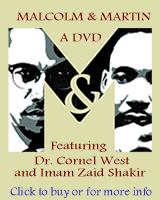
|
|||||||||||||||||||||
|
||||||||||
|
||||||||||
 |
||||||||||
 |
||||||||||
I have a confession to make. I assumed that those responsible
for the horrific murders in The study, recently released
by the department's Bureau of Statistics, showed that although
Blacks comprise only 13 percent of the In other words, more than
9 out of every 10 Black murder victims die at the hands of
another Black person. I assumed, incorrectly, that the same
was true here. And I was not alone. It turns out, however, that
those charged with the murders of the three young friends are
not Black folks. They are Latinos, at least one of whom is
in To be sure, many of
The statistic above clearly
demonstrates that mass deportation of illegal immigrants would
have virtually no impact on the rate at which Blacks are murdered
in communities like Consider this scenario: In the years between 1915
and 1970, 7 million migrants crossed Southern borders, bound
for economic opportunities in Northern cities like This is the story, not of
the illegal immigrants who are at the center of the current
debate, but that of the millions of Blacks who left the American
South following the abolition of slavery. Black people are this country's
first and only involuntary illegal immigrants. We were kidnapped
from the African coast and dragged to the American shores for
decades after the "legal" slave trade ended in 1808.
In the cloud of historical amnesia, and faced with this horrific
tragedy, some of us overlook the fact that the debate surrounding
immigration today echoes the issues that confronted Blacks
in the recent past.
The lessons taught by Black
history provide the strongest argument for rejecting forces
that seek to weaken all of us by dividing us. And division
is precisely what focusing on the irrelevant immigration status
of perpetrators creates. In the wake of the tragic
murders of three of And we must do that together. Ryan Paul Haygood is a
resident of Newark's South Ward and a civil rights attorney
in New York City and an Assistant Counsel at the NAACP Legal
Defense and Educational Fund, Inc. (LDF). Click
here to contact Mr. Haygood. |
||||||||||
| September
6, 2007 Issue 243 |
|
| Printer Friendly Version in resizeable plain text format format |
 |
 |
 |
| |
| |
































